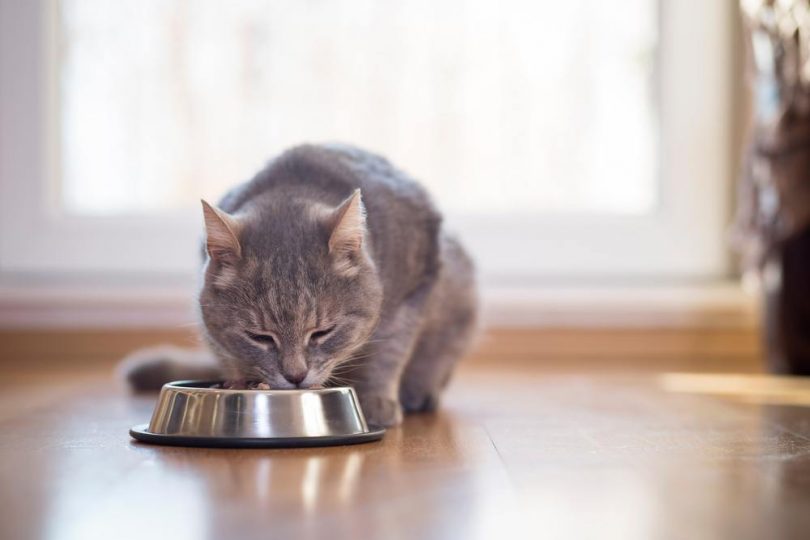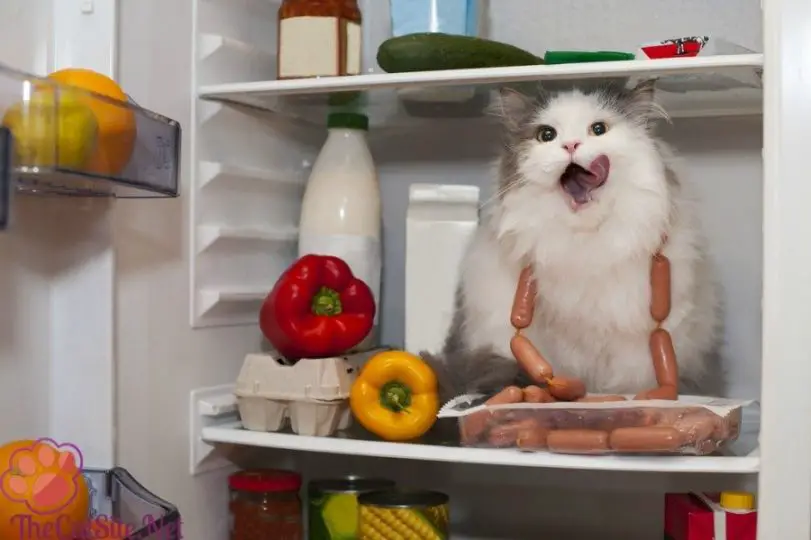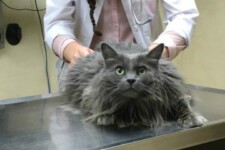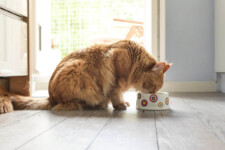The Ultimate Cat Feeding Guide For 2022
Observing proper cat feeding isn’t complicated, but it depends on various variables such as cat activity, age, health, and even the weather conditions.
Cats are extremely sensitive and feeding them with the wrong food can lead to illnesses or even death.
As a cat owner, you should know your cat’s nutritional requirements and feed them with the right food.
Cats can be finicky eaters, and it can be tricky getting them to eat a new type of food if you need to change it for a health reason or similar
Let’s take a closer look at the aspects of feeding your cat, including what type of food they should eat, how to maintain a healthy diet, and how much to feed them.

What Food Should Cats Eat?
Cats do not have a particular food that they like, however each cat usually shows a preference for one type of protein over another.
Usually your cat will come to like the food you most regularly feed it with, and ignore other food varieties.
If you find food that your cat likes, and it meets the nutritional requirements, generally stick with it.
There are different types of cat food that include for adult cats, kittens, and pregnant cats and even diabetic cats.
You should ensure that the food contains essential nutrients like water, proteins, minerals, vitamins and essential fatty acids.
- Proteins provide the needed energy for cats and comprise of nitrogen and amino acids, which stimulate the cat’s body to rebuild tissues.
- Minerals regulate the body functions and include copper, calcium, magnesium, phosphorus, iron, and iodine.
- Vitamins help in physiological processes and include fat-soluble vitamins (A, D, E & K) and water soluble vitamins (B6, B12, folic acid, thiamine, riboflavin & niacin.
Types of Cat Food
1. Wet Food
Wet food is soft, and can come in plastic/foil pouches, or cans, and can be more expensive than dry cat food.
Canned cat food has the largest moisture composition of around 70%, and has a long shelf life.
These food tend to stick to the cat’s teeth and can lead to dental problems, so you should alternate canned food with dry food every day.
Alternate wet food with the other types of food to avoid addiction to specific food.
2. Dry Food
Dry cat foods can be a cooked dried kibble, or a raw dehydrated kibble, and they have a moisture content of around 6-10%.
They have an abrasive function and are great for cleaning the gums and teeth.
Dry food with 34-38% proteins and 19-22% of fats are perfect for a healthy cat feeding, and they have a long shelf life.
3. Fresh Food
Most people don’t make fresh meals for their cats, mostly due to the amount of time it takes.
Fresh food in the form of fresh raw meat, or cooked meat is fine for cats, however do not feed them cooked chicken with bones in it, as they can splinter and place your cats health in danger.
How to Maintain a Healthy Diet for Your Cat
You need to be careful with how you are feeding your cat.
Sometimes, the cats may tend to overeat or eat too little depending on certain factors.
Make sure you feed the cat with the appropriate food ratios, without overfeeding or underfeeding your cat. Here are some tips for a healthy cat feeding:
1. Feed Based on the Cat Activity
Each cat has different habits; some are very active while others are lazy.
Active cats tend to eat more to replace the lost energy, but that should not be a reason to overfeed.
If your cat is overweight, you should manage the type of food, how often and how much you are giving your cat.
2. Cat Feeding Times
You should train your cat to feed at specific times of the day.
This will allow you to monitor the cat’s diet and any abnormalities in its feeding.
You can alternate canned food and dry food to help the cat get the highest nutritional value from the food.
Don’t leave canned food out after the cat is full, to avoid taking chances with the preservatives.
3. Surrounding Environment
The prevailing weather conditions will influence your cat’s feeding.
During extremely hot or cold weather, the cat may develop a high appetite for food and water.
During a hot day, remember to give your cat enough water and more canned food than dry food.
On a cold day, feed the cat with food rich in necessary nutrients that will help the functioning of the cat’s body.
4. Cat Food Brands
There are different brands of cat food; some are expensive while others are very cheap.
In most cases, the price of the cat food justifies the quality.
Most cheap cat food contain fillers that do not have any nutritional value to the cat.
If you want to have a healthy cat, you should only buy the best cat food brands which may be slightly expensive.
When shopping for the best brand of cat food, always check the packet label to ensure it contains the right nutrients for your cat.
Check to see the proportions of proteins, vitamins, amino acids, fatty acids, and minerals.
Do’s and Don’ts in Cat Feeding
As I mentioned earlier, cats are extremely sensitive animals, and you should watch out what you feed them and any allergies resulting from certain food.
Things That You Should Do When Feeding Your Cat
- Always feed your cats in the silent areas of the house. They prefer eating in quiet places where no one will bother them.
- If you have several cats at home, feed them using separate bowls and keep them apart. Cats feel vulnerable when feeding and, therefore, you should keep them away from each other during meal times.
- Train your cats to eat several types of food by mixing new food with the old food for at least three days to allow them to get used to the food. However, don’t change the food too often because it can affect their digestive system.
- Feed your cats with green vegetables. Domestic cats are carnivorous, and they do not receive plant proteins like wild cats that feed on grass.
- You should feed your cats with milk and water. Some cat owners feed their cats with milk as a drink and fail to provide them with water. This may lead to dehydration, and some organs may fail to work.
- Feed your cat using stainless steel or ceramic bowls instead of plastics. Plastic dishes are friendly to bacteria and may cause illness in cats. Some cats may also become allergic to plastics.
Things That You Should Not Do When Feeding Your Cat

- Don’t feed your cat with human food. Foods such as chocolate, raw eggs, bones, pork, alcohol, sugar, and fish are a no-go zone.
- Don’t put the feeding bowl near the litter box. Cats eat away from where they eliminate and putting the food there, forces them to eliminate elsewhere (hopefully not on your sofa).
- Do not feed your cat with dog’s food. Cats require a lot of proteins and amino acids that are not contained in dog food.
- Do not overfeed your cat. Only give the amount that your vet recommends, and distribute it into several times a day.
Overfeeding a cat may lead to obesity, premature aging, and early death. Overfeeding is also one of the causes of vomiting in cats.
If your cat refuses to feed for more than two days, or shows unusual behavior or allergies, you should consult your vet.




